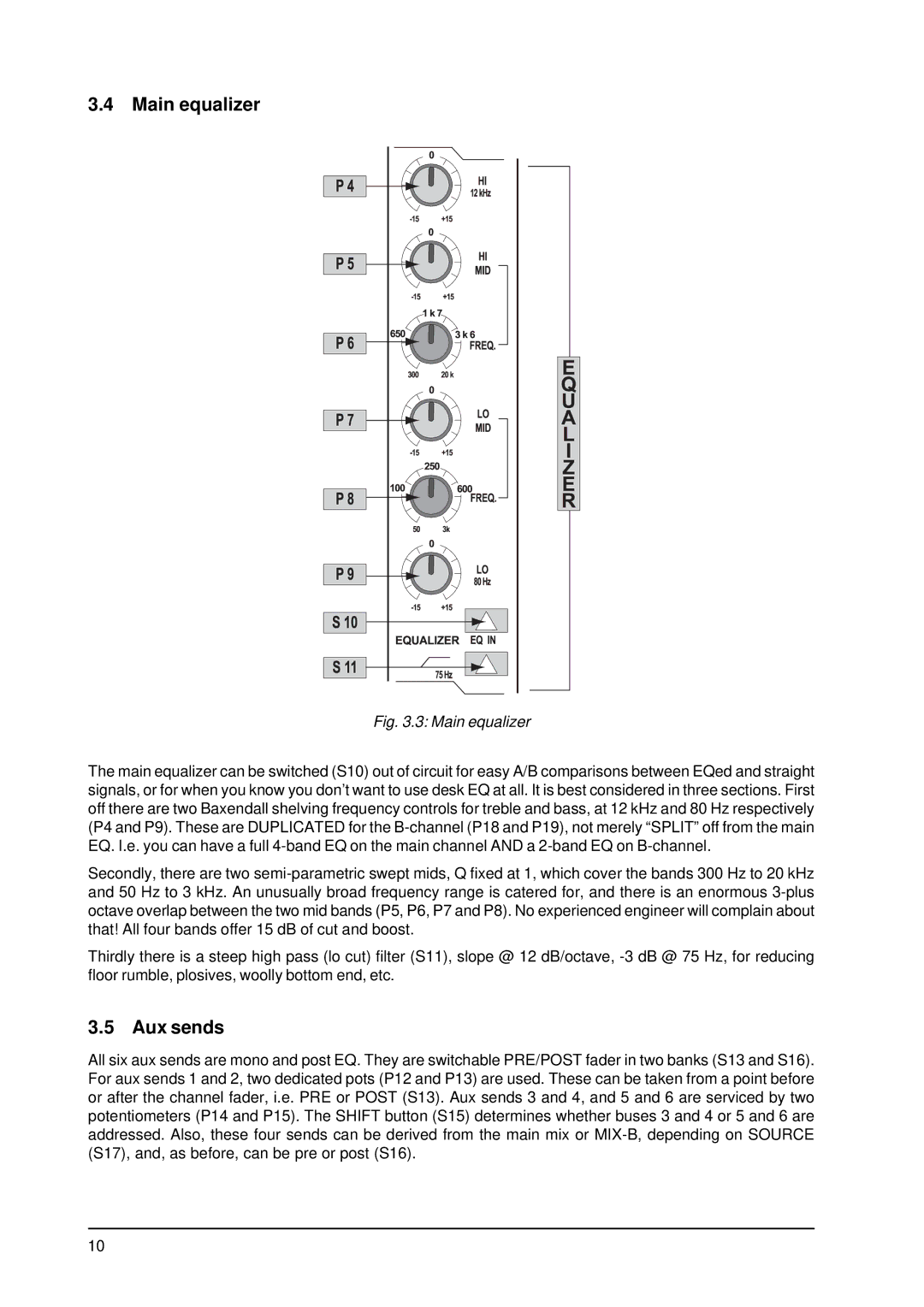
3.4 Main equalizer
Fig. 3.3: Main equalizer
The main equalizer can be switched (S10) out of circuit for easy A/B comparisons between EQed and straight signals, or for when you know you don’t want to use desk EQ at all. It is best considered in three sections. First off there are two Baxendall shelving frequency controls for treble and bass, at 12 kHz and 80 Hz respectively (P4 and P9). These are DUPLICATED for the
Secondly, there are two
Thirdly there is a steep high pass (lo cut) filter (S11), slope @ 12 dB/octave,
3.5 Aux sends
All six aux sends are mono and post EQ. They are switchable PRE/POST fader in two banks (S13 and S16). For aux sends 1 and 2, two dedicated pots (P12 and P13) are used. These can be taken from a point before or after the channel fader, i.e. PRE or POST (S13). Aux sends 3 and 4, and 5 and 6 are serviced by two potentiometers (P14 and P15). The SHIFT button (S15) determines whether buses 3 and 4 or 5 and 6 are addressed. Also, these four sends can be derived from the main mix or
10
